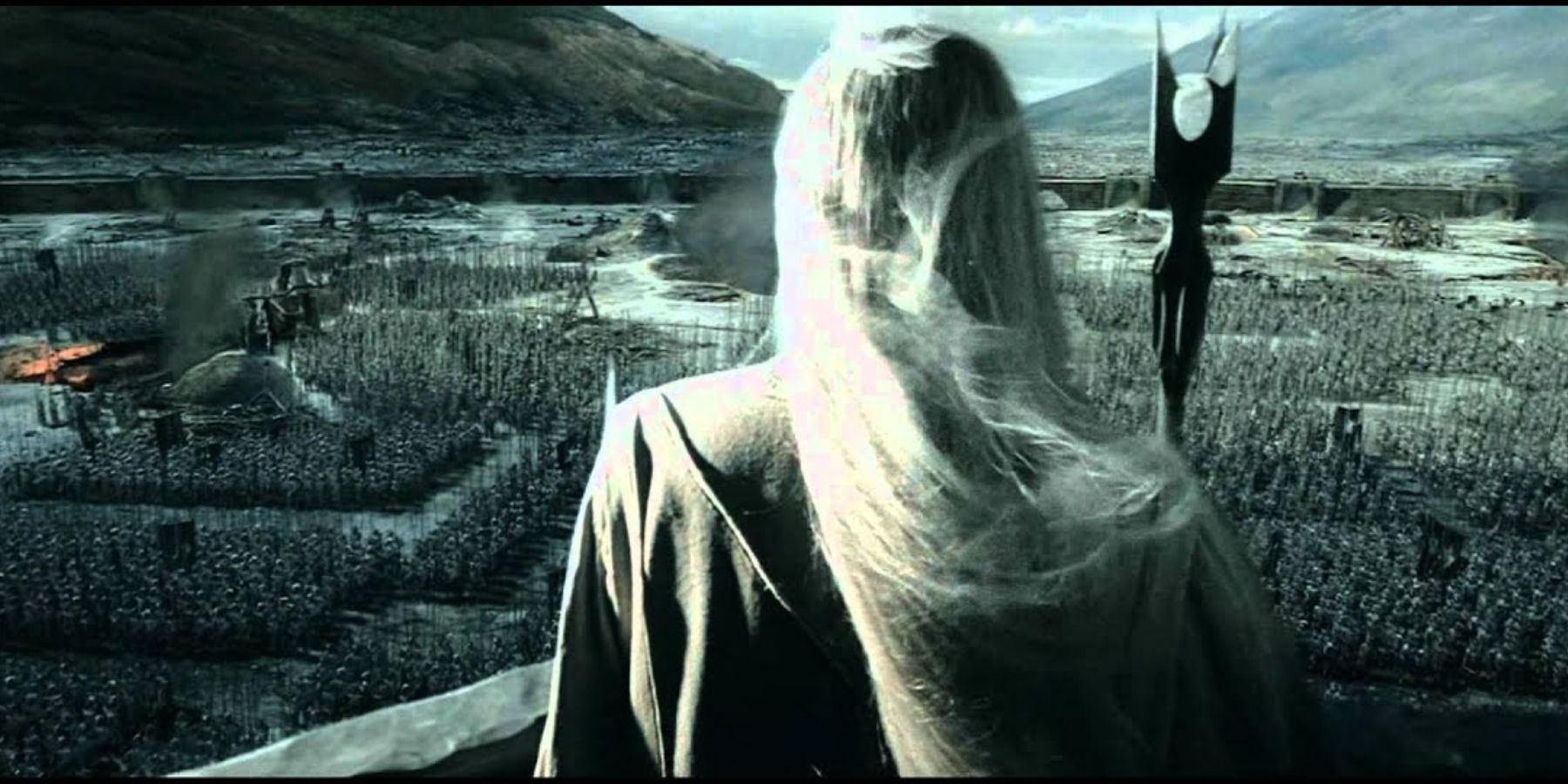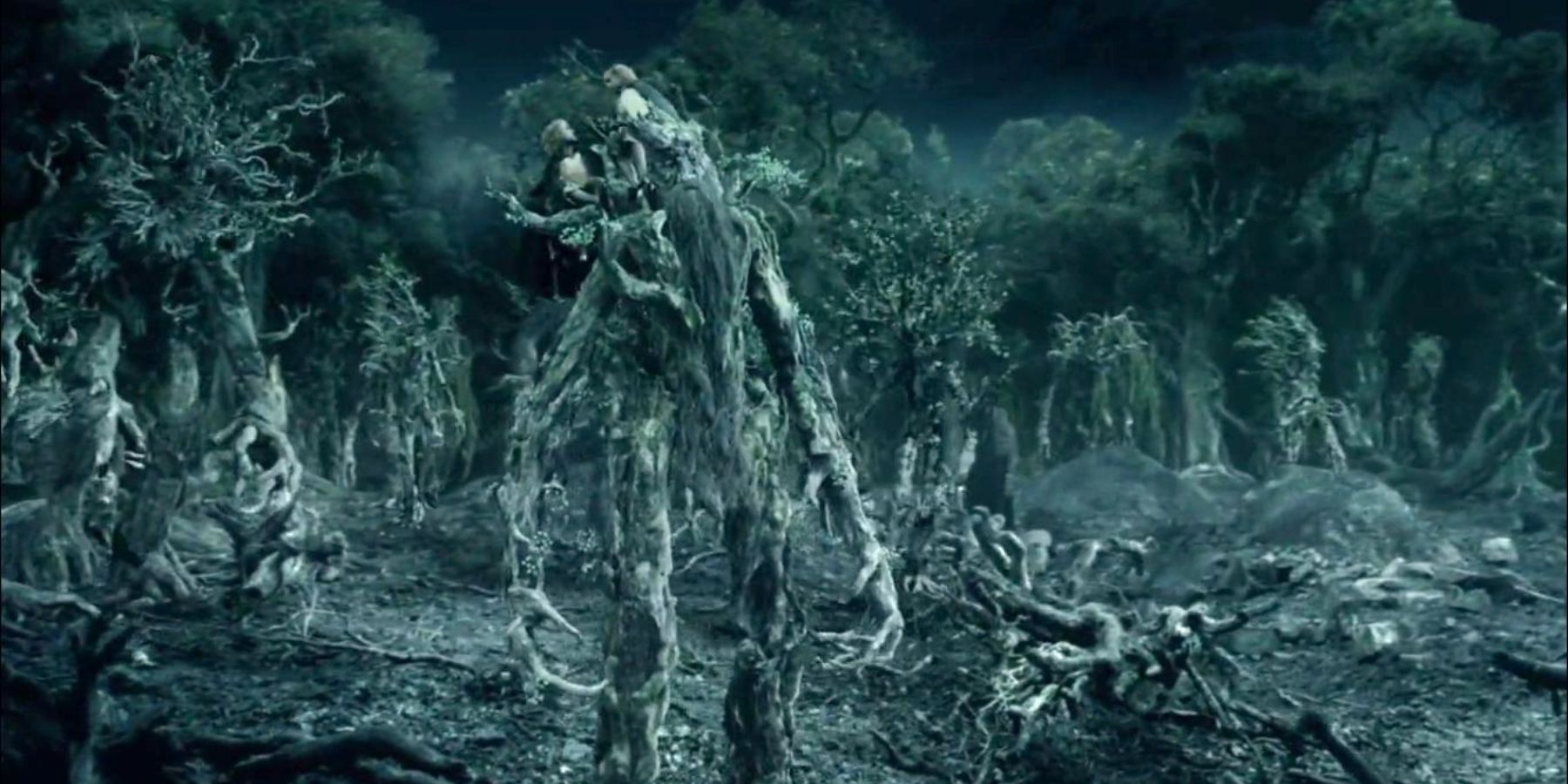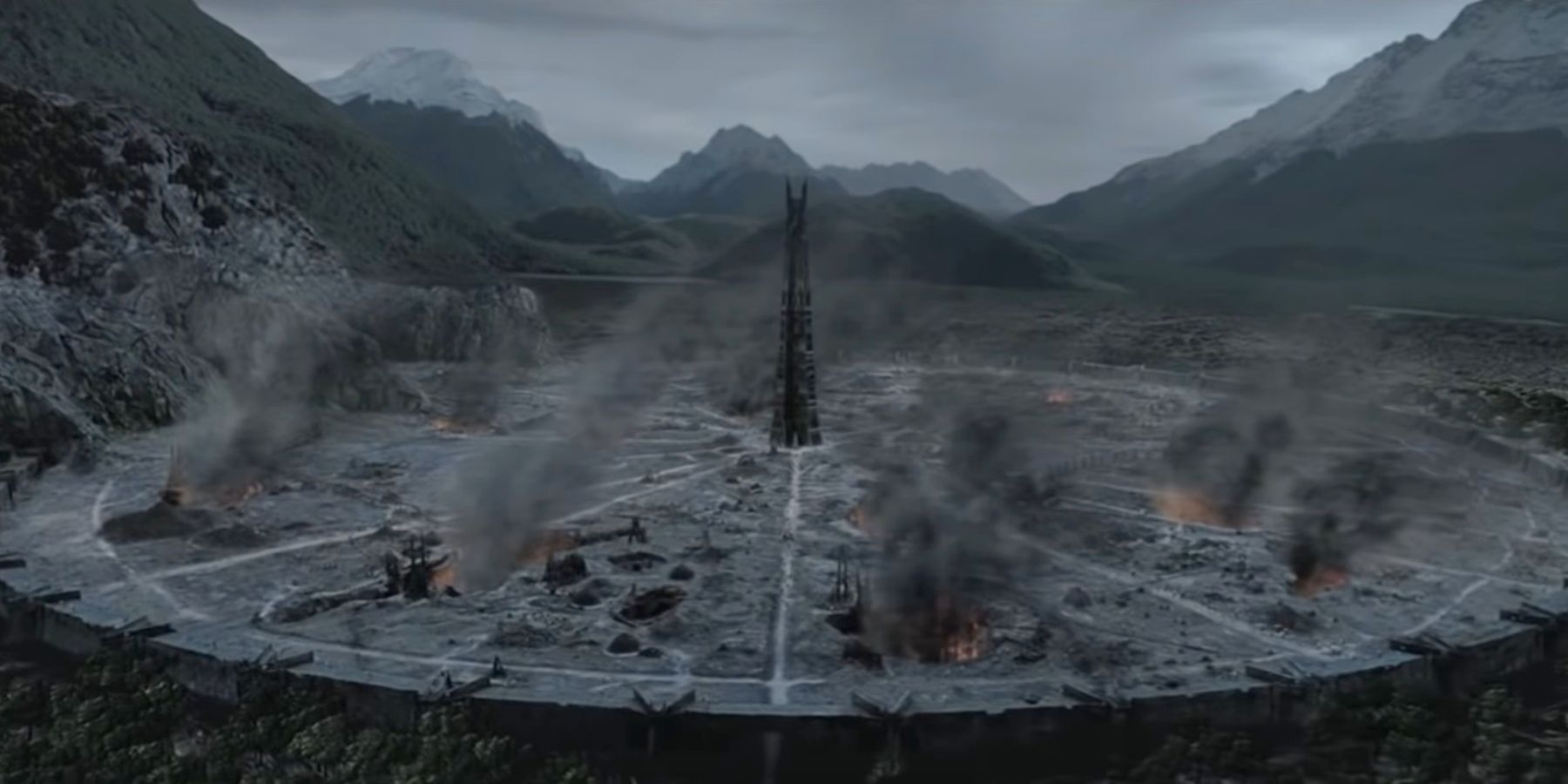There are many locations within the Lord of the Rings trilogies that stick out in the audience’s minds. Some of them are known for their beauty, from the regal and golden halls of Edoras to the glistening white towers of Gondor. Others are known for their putrid and malicious exteriors, from the haunting and ethereal Dead Marshes, to the eerie and haunted Weathertop. But arguably one of the most notable places in Middle Earth is Isengard.
When Merry and Pippin are captured by the Uruk-hai at Amon Hen, the band of orcs make straight for Isengard, where Saurman’s domain, the Tower of Orthanc resides. Although the hobbits manage to escape the orcs and run into Fangorn Forest, they still end up in Isengard through a roundabout path involving the Ents, the tree-herders of the forest who decide to put an end to Isengard and its destruction of their woodlands. The hobbits are later joined in the ruins of Isengard by Aragorn, Gimli, Legolas, and Gandalf. But as the company approaches the tower, in order to seek an audience with the White Wizard who is now trapped there, and his poisonous right hand Wormtongue, Gandalf informs them that Isengard was not always so abysmal.
The riders, alongside king Theoden and a host of Rohirrim who have just come from the Battle at Helm's Deep, must first pass through the Wizards Vale. This sickly land once had been fair and green, and through it, the Isen flowed, but as the companions passed through it, they could see nothing but dark mists and a dried-up river bed. Once they get inside the boundaries of Isengard itself, which is formed of the single tower directly in the center of a great circle measuring a mile from rim to rim, they are shocked at the state of rubble and flooding around the tower. Unbeknownst to them, the Ents came the night before and ransacked the place in revenge for the destruction of the forests that Saruman’s orcs had created.
In the Two Towers film adaptation, the scene was shot using a scale miniature of Isengard, which was made from polystyrene and painted. The scale team at Weta studio’s specifically made the wall of the dam that holds the waters of Isen weak, so that they could film a single-take shot of the dam bursting open and the waters flooding through the lands. The Ents and the hobbits were then imposed over the miniature scene by Weta Digital.
In the books, Gandalf describes a feeling of sadness at the ruin of Isengard, and the ailment that has befallen the once beautiful land because of the treachery of the wizard who was supposed to protect it. He tells them that ‘Once it had been green and filled with avenues and groves of fruitful trees, watered by streams that flowed from the mountains to the lake. But no green thing grew there in the latter days of Saruman.’
In his long reign as the head of the order of the wizards, it was Saruman who ordered the construction of the large wall. It was built by slaves to keep out prying eyes when he first began to concoct his plan to seize power from the dark lord. From that point onwards, he began twisting the birds and creatures who lived there, chopping down the trees until nothing was left but the ‘burned and axe-hewn stumps of the ancient groves.’ He was also crafty and built forges underneath his tower in secret so that neither friend or foe would learn of his weaponry and orcs armies until it was too late to stop him.
During the Fourth Age of the World, when the lands have returned to peace, and the kingdoms have united in harmony, Treebeard becomes the keeper of Isengard. There he is able to replant and regrow trees, and encourage the creatures of Middle Earth to return to the scorched lands and begin anew. The old fortress becomes a place of prosperity and growth. It is thought by many that the inspiration for the story of Isengard came from Tolkien’s journey as a young man, leaving the English woodlands of his childhood and moving to the soot-stained industrialized Birmingham.
He hated the big city and dreamed of it being ground to a halt so that nature would take back over and renew the lands that humans had ruined with their machines and factories. There are many resonances between his feelings of loss and mourning about the countryside, and the young Ent Bregalad's feelings of loss and mourning at the trees who were killed and mutilated in Isengard, but the books reflect his hopes that eventually nature will win as it does in Isengard once the evil that strangled it has been removed.



